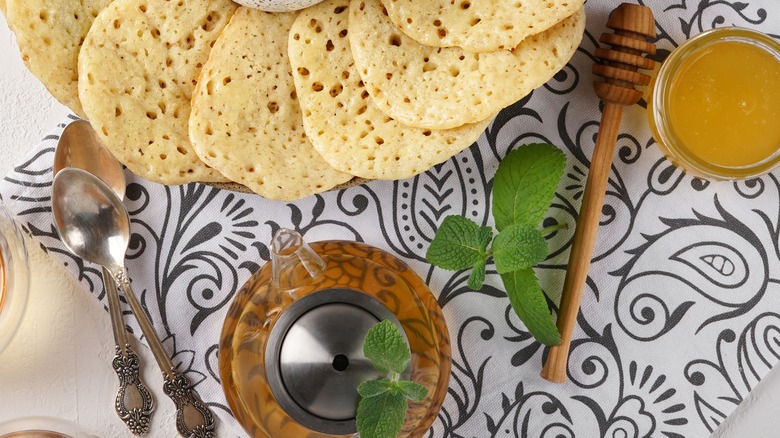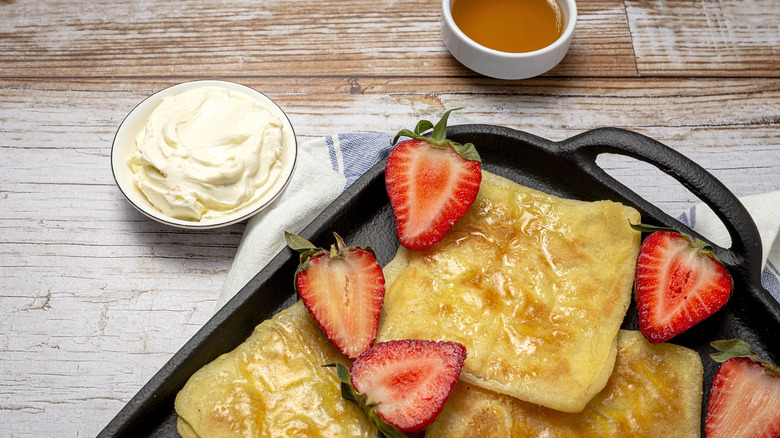Here's What A Quintessential Breakfast Looks Like In Morocco
Pancakes, honey, eggs, bread, spreadable white cheese, tea — all things that can be found on an American breakfast table ... and a Moroccan one. Of course, this foreign meal doesn't look quite like what you're used to, as breakfasts differ globally, but the African-Arabic-Spanish-French-fusion cuisine will not disappoint.
While there are a myriad of breakfast foods available, there are a few staples in a successful Moroccan morning meal. Pancakes, or baghrir, are made from semolina flour. They are very airy and light due to the many holes, and get drizzled with honey and butter. Eggs can be poached, boiled, or fried, then topped with salt, cumin, and paprika. Bread in Morocco, or khobz, is considered to be sacred and is used to make toast. Traditional khobz is flat and round; it is typically served with olive oil, honey, and jben, a soft white cheese often made from goat milk. To quench your thirst is mint tea, the country's national beverage which represents hospitality and respect.
The preceding Moroccan breakfast foods fun-house-mirror traditional American breakfasts in many ways, but there are a few outliers that we aren't used to seeing on our tables in the morning. Dark olives, naturally preserved in salt, are a necessity at every meal, including breakfast. Finally, and most unusually, bissara, or split pea or fava bean soup, is common at morning meals, especially in the cold seasons because it has ingredients known to help boost the immune system.
More Moroccan morning meals
Sometimes you're in the mood for something a bit more involved (perhaps more akin to a fancy brunch rather than an average breakfast), and Moroccan cuisine has got you covered. One choice is khlea with fried eggs. Khlea is a preserved meat, usually beef or lamb, marinated in spices, cut into strips, dried in the sun or oven, then preserved in fat for up to two years. While this meal is traditionally cooked in a tagine, a special north African cooking vessel with a cone-shaped lid, you can make it at home with a regular frying pan. Another option that can be eaten savory or sweet is msemen, a square-shaped crepe. Made from semolina flour (as most bread products are in Morocco), the dough is flattened, folded, and fried. These crispy and flaky pancakes can be served with honey, jam, olive oil, butter, jben cheese, or peppers.
To wash down all of this delicious fare, try Moroccan spiced coffee by adding warming spices such as cardamom, cinnamon, cloves, ginger, nutmeg, and black pepper to your coffee grounds (preferably a dark roast) before brewing. If you want to spice up (or sweeten) your morning, look no further than these fascinating and delicious choices. With a quick trip to the grocery store to secure the essential ingredients for Moroccan cooking, you can start your day with an enticing if unfamiliar breakfast.

